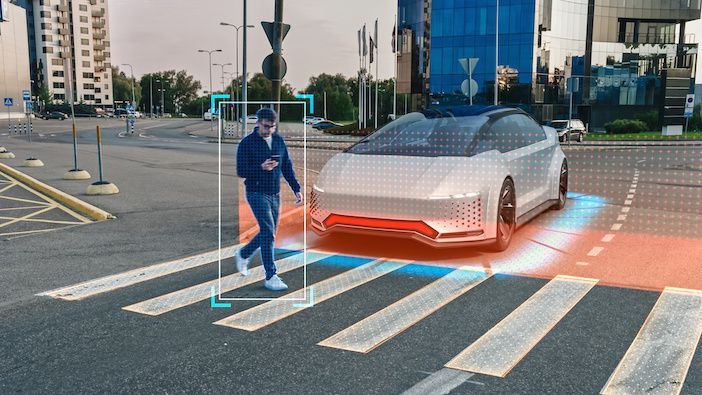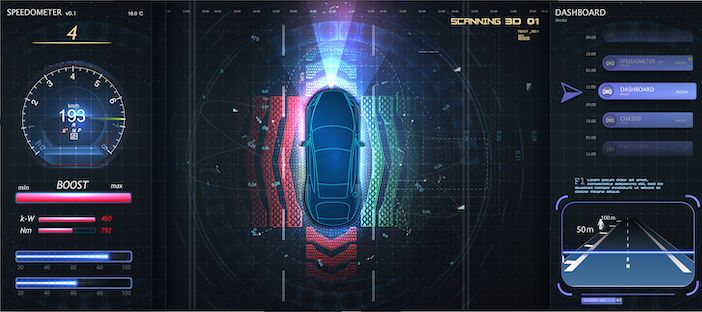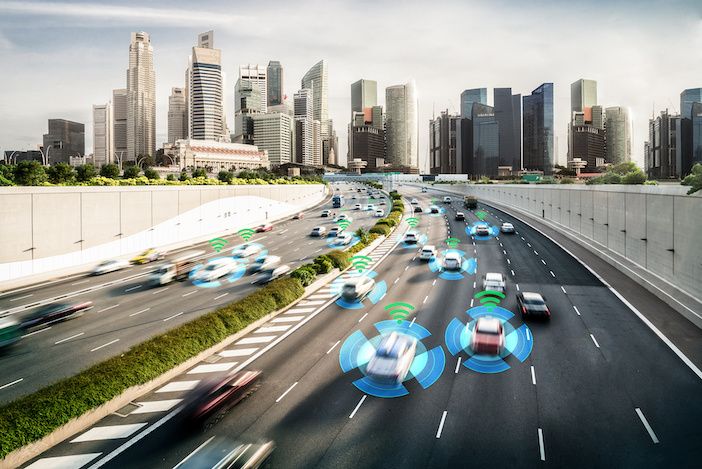In this thought-leadership piece the FHWA’s Intelligent Transportation Systems Joint Program Office (ITS JPO) director Brian Cronin gives his insight into the USA’s National V2X Deployment Plan and explains why he believes greater connectivity is an essential part of improving road safety
“On your left!”, from a cyclist to a car. The honk of a horn. A driver waving a pedestrian across the street. A stoplight turning green. These are all forms of communication used daily in transportation. But what if there was another way to communicate – a digital way – that augmented the way humans communicate today and gave us information to make better, safer decisions? What if it gave people more time to make these decisions? That is what the future of transportation looks like with vehicle-to-everything (V2X) communications. It provides all road users with critical information and situational awareness so they can avoid crashes and travel safely on our roadways, no matter if they are drivers, cyclists, or pedestrians.

This is the goal of the US Department of Transportation’s (USDOT) National V2X Deployment Plan, which was released in draft form in October 2023. USDOT is currently reviewing public comments submitted in response to the plan.
“V2X communications provide the equivalent of a verbal “on your left” heads up, but in advance so drivers and cyclists can have additional time to react and avoid crashes.”
We have likely all had the experience of slamming on our brakes on the highway as we came upon a crash that was beyond our field of view. As soon as drivers realize they can stop safely, concern can shift to being hit from behind when another driver fails to stop. Secondary crashes are common, particularly in bad weather, but they don’t have to be. V2X communications allow cars to share information with other cars about the crash minutes ahead of time. Many of us have also had the experience of hitting the brakes as a cyclist comes into view as we are making a turn – or perhaps we are that cyclist and must swerve to avoid the car. V2X communications provide the equivalent of a verbal “on your left” heads up, but in advance so drivers and cyclists can have additional time to react and avoid crashes. V2X addresses these all-too-common situations and many more because it allows road users to see beyond their line of sight.
Imagine a city where every intersection broadcasts real-time traffic signal status information and every traffic signal received location information on all travelers. Imagine every pedestrian, bicyclist, and vehicle could send and receive real-time information. In this city, pedestrians obscured by large vehicles would now be seen, and drivers would receive and alert when a vehicle runs a red light. These wireless communications between vehicles, traffic signals, sensors, and pedestrians are secure and private.

Imagine a rural freeway with fog or a blizzard rolling in. How do truckers see if there is a vehicle quickly stopping ahead? How do drivers know if they are approaching a work zone? Imagine receiving a digital alert a mile ahead. Imagine knowing that you should slow down and change lanes. V2X enables this sort of information. We are fortunate to live in a time when these technologies are available today to improve safety on our roads.
V2X is a suite of communications technologies that is designed to save lives, while also enabling improvements in mobility, climate, and the economy. A key priority of the USDOT, a nationwide, interoperable V2X deployment will add value exponentially over time, as the installation of connectivity is used to support a wide array of applications that will support a wide array of benefits. USDOT is working with infrastructure owner-operators, vehicle original equipment manufacturers, mobile network operators, and many others to build this ecosystem. It will take time to build a robust ecosystem, however, we have made incredible strides in the technology communications in the last few years. For example, digital alerting on highways is available now on some automobiles and with a variety of applications. This allows public safety vehicles to display as a warning message in a vehicle, as they rapidly approach with lights and sirens moving toward a medical emergency. Crash imminent safety application infrastructure is beginning to be deployed and vehicle-based applications will follow. How will benefits evolve?
“Crashes will be prevented, thousands of lives will be saved, and serious injuries will be avoided”

In the near term of the National Deployment Plan, state and local agencies can expect to see benefits of intersection installations for their public fleets in the manner of faster, more reliable travel times. This will help get children to school on time, public transit riders to their jobs, snowy roads plowed faster, and emergency vehicles to the hospital. Pedestrians, bicyclists, and motorcyclists may quickly be part of the ecosystem through their cell phones, or other devices, acting as a beacon to drivers on the road, making them readily seen, or receiving a warning through a phone-based application. As automobile equipage evolves, the dramatic safety benefits will start, and multiply exponentially. Crashes will be prevented, thousands of lives will be saved, and serious injuries will be avoided.
The Federal Communications Commission provided 30 MHz of licensed spectrum to assure the industry that lifesaving crash imminent applications can be developed, deployed, and trusted. To get there, we need to work together. We will also leverage American innovation and the immense capabilities of our mobile network operators to advance digital alerting through our cellular services. Finally, the public sector will draw upon our unique role to ensure public good and equitable deployment of life-saving technology.
With the launch of this plan, we are advancing this journey together towards zero deaths. Join us!





